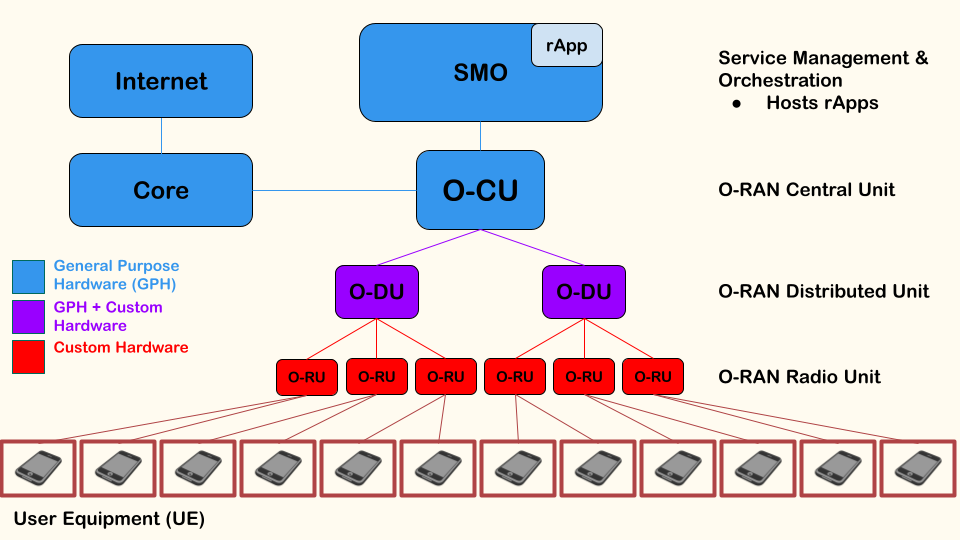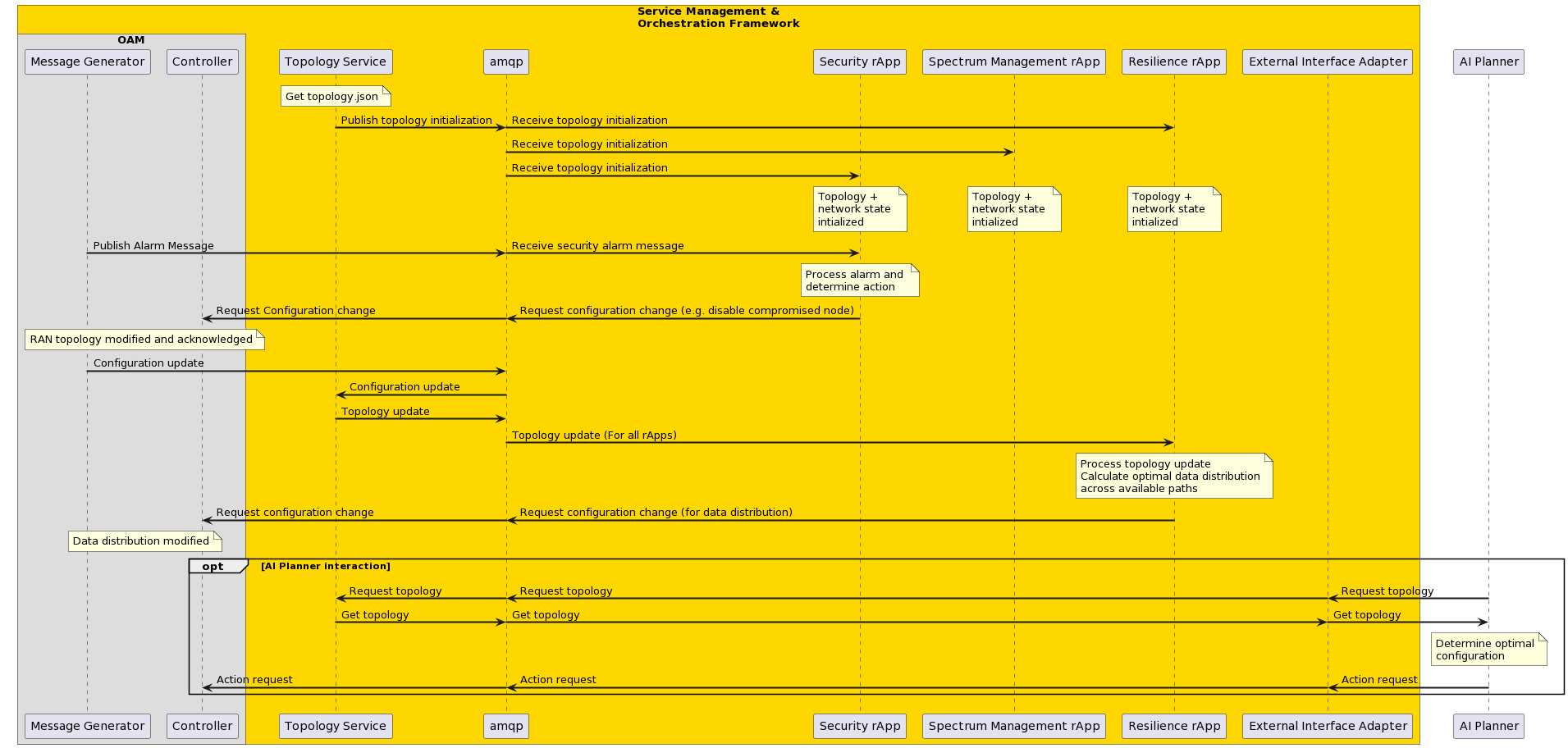| Version 19 (modified by , 2 years ago) ( diff ) |
|---|
5G/NextG
Team: Jeff Acevedo | Stanislav Ceman | Ryan Lin | Sreeram Mandava | Aleksa Samardzija | Nikhil Sampath | Sanskar Shah | Steve Shin | Xoua Thao
Project Objectives
The ultimate goal of the project is to develop an open-source implementation of a 5G system. Specific tasks included implementing an end-to-end session of the system from user equipment to the internet, and developing network control and management applications. All work was done in the context of Open RAN (O-RAN), which seeks to create a more disaggregated and flexible architecture of the traditional radio access network (RAN). A diagram displaying the basic O-RAN architecture is shown below.

A central aspect of the project was developing applications (rApps) and framework services in the Service Management and Orchestration (SMO) framework. The three rApps developed by the team were the Security rApp, Resilience rApp, and Frequency/Spectrum management rApp. Functions of the framework services included topology maintenance, topology visualization, alarm generation, and spectrum sensing. A block diagram and sequence diagram detailing the layout and dataflow of the SMO framework are shown below.
.png)

Topology Scenario
To understand and convey the use of the applications and framework services, the group developed a realistic situation in which the work would apply. Say there is a straight-line road running east-west. An example of such a road is shown below, at latitude 38.892 (Washington D.C.).
Weekly Slides
Radio System Implementation
Amarisoft
OpenAirInterface
SMO Framework Services and Applications
Framework Services
Security rApp
The Security rApp aims to provide closed-loop control in the SMO. This means that the network would be automatically configured based on changes. The rApp reads information from a Kafkabus regarding information about threats to the system. The existing code makes a graph out of the topology information contained in a JSON file. The program then receives and parses alarms and responds accordingly. In the event of a compromised part, the rApp quarantines the node and updates the access status of the node within the graph object.
Topology/Resilience rApp
One method of increasing the resilience and efficiency of a RAN system is to have a single UE device connected to two RAN networks. The individual networks are managed by their own SMOs, which are in turn managed by a master SMO. Using the two networks, the data transfer can be optimized for speed and efficiency. Additionally, if one of the networks were to be compromised, connectivity can be maintained through the other network. A drawing of the system is shown below.
.jpg) The Resilience rApp in the master SMO can interact with the Resilience rApps in the two networks in order to learn about the topology and the state of the two networks. The master SMO can handle optimization and maintain constant connectivity for the UE. Topology information in the code can be tagged with attributes including cost, availability, performance, and security. This information can be used for optimization purposes.
The Resilience rApp in the master SMO can interact with the Resilience rApps in the two networks in order to learn about the topology and the state of the two networks. The master SMO can handle optimization and maintain constant connectivity for the UE. Topology information in the code can be tagged with attributes including cost, availability, performance, and security. This information can be used for optimization purposes.
Attachments (8)
- ORAN_Topology (1).jpg (53.1 KB ) - added by 2 years ago.
-
image.png
(33.8 KB
) - added by 2 years ago.
Security rApp Sequence Diagram
- 5G_NextG Week 9.png (78.3 KB ) - added by 2 years ago.
- AMQP Diagram (2).png (114.7 KB ) - added by 2 years ago.
- SystemSequenceDiagram_v3.png (90.2 KB ) - added by 2 years ago.
- TopologyStoryImage.png (429.8 KB ) - added by 2 years ago.
- AMQP Diagram (3).png (115.7 KB ) - added by 2 years ago.
- output_plot.jpg (1.2 MB ) - added by 2 years ago.

